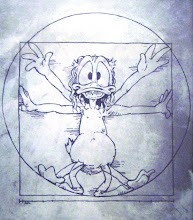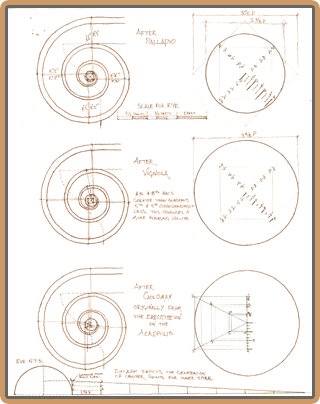As a traditional architect, as an artist that is disgusted at the thought of future generations comparing my century's art with those of other eras, I often become very depressed at the thought that I was born when I was. (Theological problems with that aside...) I would be happy if I was born anytime during the height of Athens. I truly share in the mindframe of the Renaissance. I would have excelled in the Baroque age. But today, I struggle just to find art that doesn't make me want to puke, and my own progress is held up merely because there's very little to learn from, and it's so disdained by the rest of society.
But Pixar makes me happy to be alive when I am.
 If I had the chance, I'd drop everything in my career, move the family up to the bay, and start over with Pixar. I love what they do that much. It's not just that they make entertaining movies for kids. It's not just that their kid movies are just as enjoyable for adults. It's because they make great art, and they are upholding and re-presenting the Truth when they do it.
If I had the chance, I'd drop everything in my career, move the family up to the bay, and start over with Pixar. I love what they do that much. It's not just that they make entertaining movies for kids. It's not just that their kid movies are just as enjoyable for adults. It's because they make great art, and they are upholding and re-presenting the Truth when they do it.There are many things about Wall-E that I could go on about. Unfortunately, I've only seen it once, and budgets dictate that I'm going to have to wait for the DVD to see it again. and Again. and Again.
But one of the greatest gems about Wall-E was missed by most audience members eager to beat the parking lot jam-the outro during the end credits.
During a sequence of developing images of art, the short story takes us through the history of art itself, beginning with the two-dimensional bas relief of the Egyptians, to Roman mosaics, to representative frescoes, ultimately ending not with the modernist movements of cubism, surrealism or dadaism, but with impressionism. The 20th century's contribution to the history of art is entirely missing.
Well, not really.
 What follows is a series of Atari-level pixelated graphics of the film's characters weaving in and out of the end credits, curiously reminiscent of the artistic quality of hieroglyphics-which is where the sequence began. Why is this important? Because pixelated, non-figural representative art is the culmination of Modernist abstraction art. But the beauty of this little outro is not just that it cutely gives an art history course, but that the message is mimicking the developing human history as the feature film Wall-E presents it.
What follows is a series of Atari-level pixelated graphics of the film's characters weaving in and out of the end credits, curiously reminiscent of the artistic quality of hieroglyphics-which is where the sequence began. Why is this important? Because pixelated, non-figural representative art is the culmination of Modernist abstraction art. But the beauty of this little outro is not just that it cutely gives an art history course, but that the message is mimicking the developing human history as the feature film Wall-E presents it.As art developed from 2D to 3D (as mankind moved from wall hieroglyphs and mosaics to realistic figural work and then landscapes), a heightened sense of realism was attained, but the subject of the pieces were gradually reduced in 'obviousness'. The subject of Egyptian art is obvious. The subject of Impressionist work is by definition, not obvious. There is a removal from reality here, just like the removal from reality that the extraterrestrial earthlings suffer from in the feature. Overall, the outro challenges us to wonder if we, the human race, are in fact progressing. Our art is representative of our ideas, so what does the lack of clarity, the lack of subject in our art say about where we are and where we are headed?
There is more meaning, story, representation and truth in that little outro than in any regular 'ideology flick' from mainline Hollywood.

And it was done without words.
So to those complainers out there who thought the first 45 minutes of Wall-E was too boring or could have been edited: Open your eyes. There is a lot there. You just have to be willing to accept silence for a minute to learn to use your eyes again.



3 comments:
http://www.pixar.com/companyinfo/jobs/index.html
Cute.
When are you going to start hitting the keyboard again?
Very soon. The settling in process--if you can call it that--has been nuts, but my awareness of my ignorance has become so painfully acute that I can't pay attention much longer to the truly needful.
Must blog.
Post a Comment